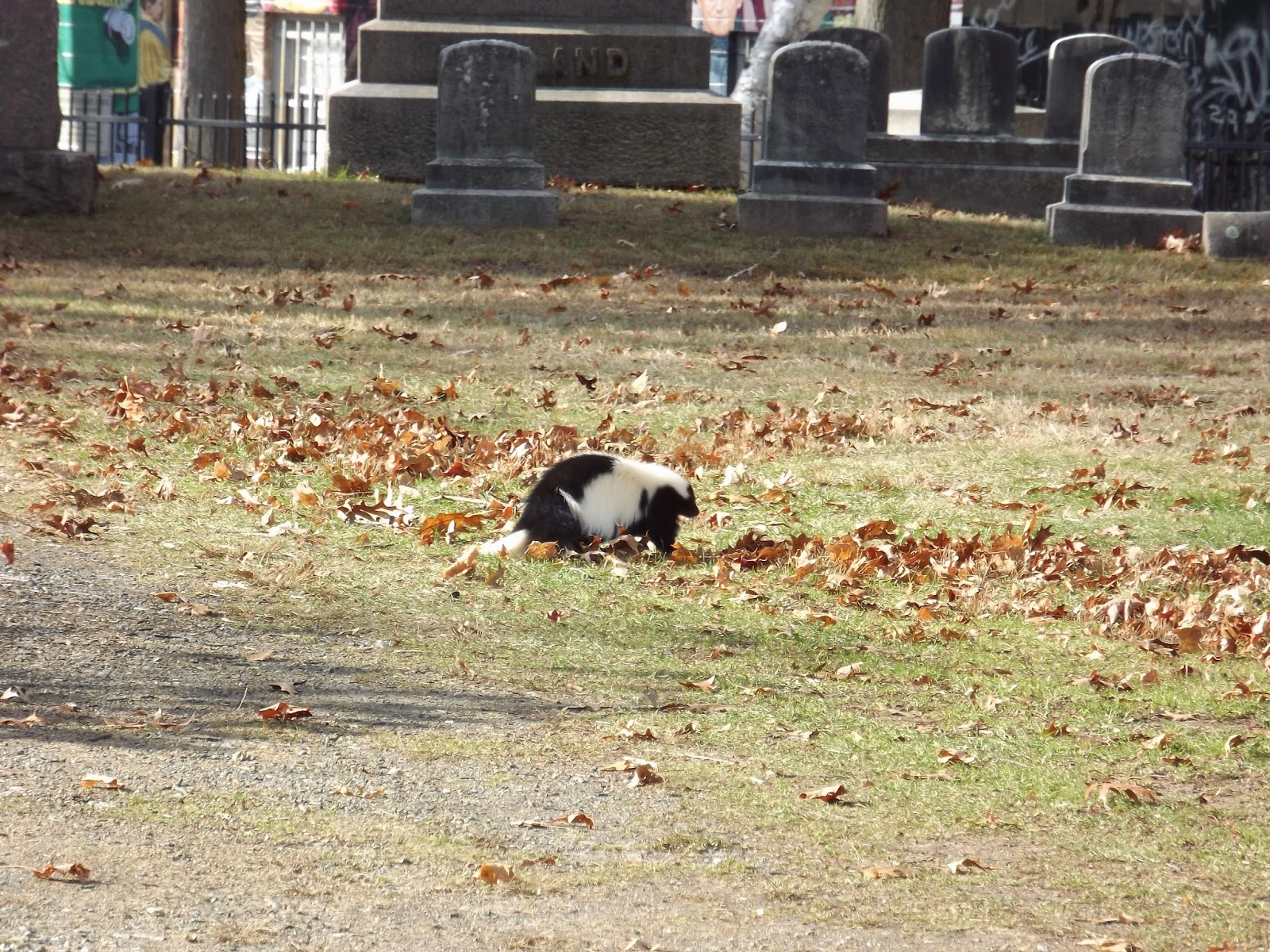Back in October one of my friends posted on Facebook talking about a cemetery she was about to visit in Hartford. It was, she said, where Katharine Hepburn is buried. Not long after that I invited myself down to see her, and we managed to coax another friend from our college track team to make the drive from New York to join us.
 The cemetery in question is Cedar Hill. After having brunch Coach drove us there, and we left the car near the entrance. The grounds are large, well-kept--though there were large drifts of leaves that were treacherous, as we couldn't tell what the ground did under them--and a bit hilly. Though it was chilly and windy, it was a nice day for it; lots of leaves had fallen but some were still hanging on, and the Japanese maples throughout the grounds were particularly vivid.
The cemetery in question is Cedar Hill. After having brunch Coach drove us there, and we left the car near the entrance. The grounds are large, well-kept--though there were large drifts of leaves that were treacherous, as we couldn't tell what the ground did under them--and a bit hilly. Though it was chilly and windy, it was a nice day for it; lots of leaves had fallen but some were still hanging on, and the Japanese maples throughout the grounds were particularly vivid.One of the notable residents of Cedar Hill is Samuel Colt of firearms fame. You can still see the Colt factory from I-91 as you drive through Hartford, so it's no big surprise that he's buried in the city. His family's monument is made of pink stone, carved in Egyptian motifs and accented with bronze. It's large, but not as ostentatious as some of the other monuments there.
 On the other hand, you could miss the Hepburn family's plot if you weren't looking for it. A large stone carved with the family name is all but hidden under two bushes; directly in front of it are the parents' plaques, set into the ground, and the four children's in front of that (Katharine's is second from left in the photo). Each plaque is engraved simply with a name and dates, with no mention of occupation or achievements. It's both admirable in its simplicity, and a little anticlimactic that such a famous woman has such a plain memorial.
On the other hand, you could miss the Hepburn family's plot if you weren't looking for it. A large stone carved with the family name is all but hidden under two bushes; directly in front of it are the parents' plaques, set into the ground, and the four children's in front of that (Katharine's is second from left in the photo). Each plaque is engraved simply with a name and dates, with no mention of occupation or achievements. It's both admirable in its simplicity, and a little anticlimactic that such a famous woman has such a plain memorial. Not far away is the tomb of J.P. Morgan. The family's monument is big, and I'm sure it cost a hefty sum, but again, it's not as grandiose as I might have expected. Then again, according to the visitors' guide, the monument is supposed to represent Morgan's "vision" of the Ark of the Covenant; I'm assuming by vision they mean idea, not revelation, but whatever the case, that does add that bit of extravagance and self-importance one might associate with someone like Morgan.
Not far away is the tomb of J.P. Morgan. The family's monument is big, and I'm sure it cost a hefty sum, but again, it's not as grandiose as I might have expected. Then again, according to the visitors' guide, the monument is supposed to represent Morgan's "vision" of the Ark of the Covenant; I'm assuming by vision they mean idea, not revelation, but whatever the case, that does add that bit of extravagance and self-importance one might associate with someone like Morgan.Of course, there are lots of non-famous people buried there, some of whom have interesting headstones, memorials, or mausoleums. One that really stuck out was the Hanson family's. I don't know who these particular Hansons are, but they've got two things going for them. The first is that their monument features a carving based on Scandinavian runestones, and includes a runic inscription (though I will say that I think they ought to have chosen a different lettering style for the family name, as my opinion is that the one used doesn't fit well with the rest of the carving). The second is that the monument is right in front of a pair of large and glorious threadleaf Japanese maples. At any other time of year it probably wouldn't have been as striking, so we went at just the right time.
And then we went to an Irish pub and had some nachos with pastrami on and I had a really good cider. When I grow up I want to be able to hang around in cemeteries and drink good cider all the time.






















